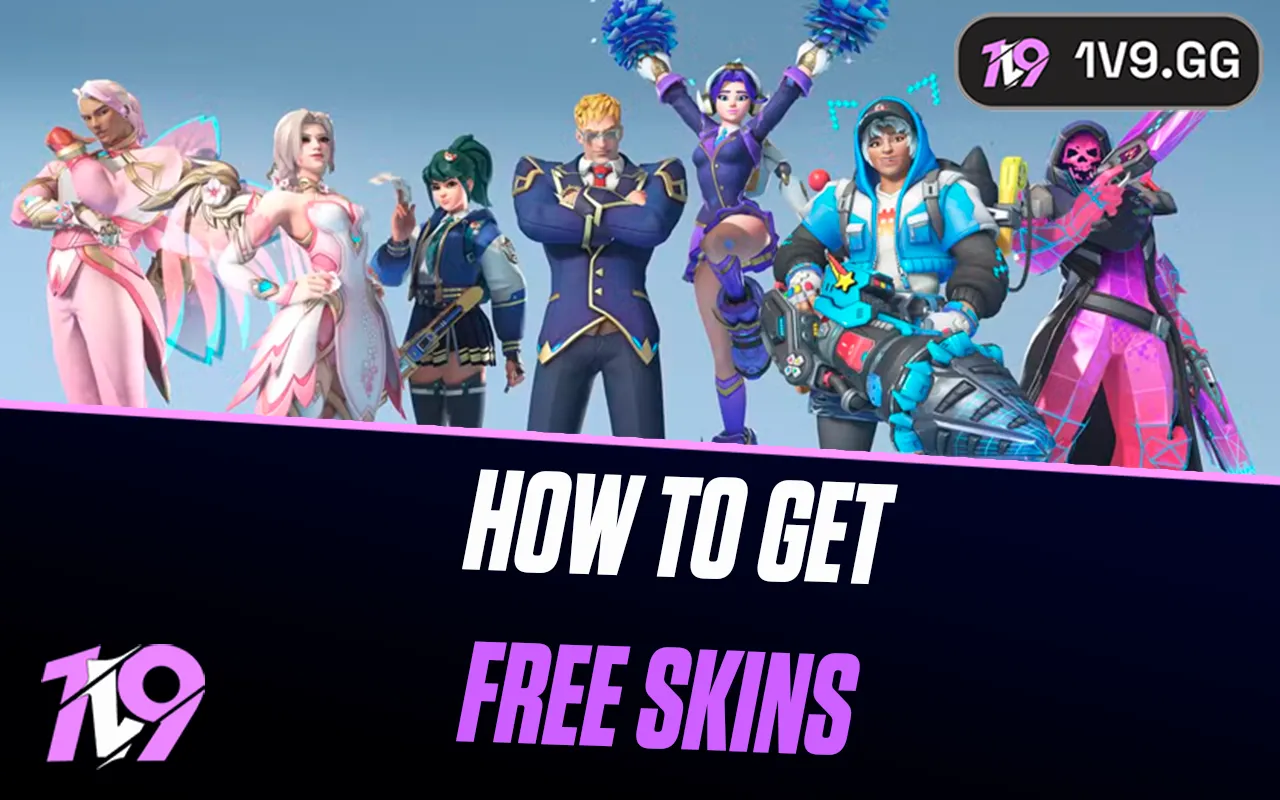
League of Legends: 8 Best Beginner Tips For Support
The support role in League of Legends is one of the best ways to ease into the game’s mechanics and strategies. With no farming responsibilities and a bit more room for error, playing support offers a less stressful introduction to the complexities of the game. Despite its forgiving nature, the role has a unique set of responsibilities and requires an understanding of mechanics that don’t apply to other roles.
If you’re new to the support role, figuring out what to do can sometimes feel overwhelming. Fortunately, with the right guidance, you can quickly become a valuable asset to your team. In this guide, we’ll cover 8 essential tips that will help you master the fundamentals of supporting and make your first steps in League of Legends both fun and impactful. Let’s dive in!
#8: Deny the Enemy Bot Lane Farm

As a support, your job isn’t just to help your ADC farm and secure kills—it’s also about disrupting the enemy bot lane’s ability to farm effectively. Denying your opponents gold and experience can create a significant advantage for your team, especially in the early game.
Ranged supports can accomplish this by harassing the enemy ADC whenever they attempt to last-hit minions. Well-timed skill shots, like Morgana’s Dark Binding or Lux’s Light Binding, can punish their positioning or force them to back off entirely. Meanwhile, melee engage supports like Leona or Nautilus can use aggressive positioning to zone enemies away from the wave, making it too dangerous for them to step forward.
Even the threat of a powerful ability, such as Blitzcrank’s Rocket Grab, can be enough to make opponents think twice before approaching the wave. For additional pressure, use the bushes to your advantage. By staying hidden in an unwarded bush, you create uncertainty and force the enemy to play more cautiously, potentially missing out on farm and experience.
This strategy is particularly effective when your lane is ahead, as your dominance can make it nearly impossible for the enemy bot lane to recover. By consistently denying minions and maintaining lane pressure, you’ll give your team a strong lead in the early game.
#7: Optimize Your Support Item Quest

Completing your support item quest quickly is key to maximizing your impact as a support, and understanding how each item works is essential. There are four support items in total, each tailored to specific playstyles, and using them effectively will speed up quest completion and boost your utility.
• Relic Shield and Steel Shoulderguards are ideal for melee supports. These items allow you to execute minions, granting gold to both you and your ADC. To maximize efficiency, prioritize last-hitting cannon minions first, as they provide the most gold, followed by melee minions. You can hold up to three charges, so always save one for a cannon minion if possible.
• Spectral Sickle and Spellthief’s Edge are designed for ranged supports. These items generate gold when you hit enemy champions, so take every opportunity to poke and trade when it’s safe, especially if all three charges are available. Keep in mind that these charges can only be used when an ally is nearby, so coordinate with your ADC to make the most of your trades.
In tougher matchups, where trading or poking is risky, even ranged supports can opt for melee items like Relic Shield. This provides a safer way to generate gold by last-hitting minions.
By understanding the mechanics of your support item and using its charges strategically, you’ll complete your quest faster, unlock wards earlier, and contribute more effectively to your team’s success.
#6: Prioritize Early Boots

Mobility is crucial for supports, as it enables you to respond quickly to fights, assist teammates in need, and create impactful number advantages in skirmishes. To achieve this, purchasing boots early—preferably on your first recall—should be a top priority.
Even basic boots provide a significant movement speed boost, allowing you to rotate across the map faster and capitalize on opportunities to secure vision, join fights, or aid your laners. Given the limited income supports typically have, investing in boots before other components is a wise choice, as their utility often outweighs the immediate benefit of additional items early on.
By prioritizing early boots, you’ll improve your map presence and ensure you’re always in the right place at the right time, giving your team a better chance at success.
#5: Experience the Bot Lane as the ADC

To truly excel as a support, it’s crucial to understand the needs and expectations of your ADC. The best way to gain this perspective is by stepping into their shoes and playing a few games as the bot lane carry yourself. Experiencing the other side of the lane will give you valuable insight into what your ADC looks for in a support, from peel and protection to zoning and setup.
Playing as the ADC also allows you to observe and evaluate the behavior of different supports. You’ll quickly notice what works and what doesn’t—whether it’s effective warding, timely engages, or poor positioning—and apply these lessons to your own support gameplay.
Additionally, watching high-elo ADC players and paying attention to their commentary on supports can provide invaluable tips. Understanding what they praise or criticize in their supports can guide you toward better decision-making and coordination in your own games.
By learning the bot lane dynamic from the ADC’s perspective, you’ll become a more intuitive and effective support, capable of anticipating your laner’s needs and contributing to a stronger bot lane duo.
#4: Master the Basics of Warding

Vision control is a cornerstone of League of Legends, and while its intricacies can take time to master, beginner supports only need to focus on the fundamentals to make a meaningful impact. After completing your support item quest, you’ll have access to more wards than anyone else on your team. At this point, it’s a good idea to swap your trinket ward for an Oracle Lens to help deny enemy vision.
As a support, you’re also in the best position to invest in Control Wards due to your lower dependency on gold for item scaling. These wards are invaluable for securing objectives and maintaining map control. With these tools at your disposal, your primary responsibility is to consistently place wards in strategic locations. Focus on bushes and key path entrances to provide vision for your team and deny opportunities for the enemy to surprise you.
In addition, destroying enemy wards before objectives or anticipated ganks is critical. Clearing vision ensures that your team has the upper hand, whether it’s in securing an objective like Dragon or setting up for a successful ambush.
By mastering these warding basics and staying proactive with your vision control, you’ll play a pivotal role in your team’s success and lay the groundwork for learning more advanced strategies later on.
#3: Support the Entire Team

One of the biggest misconceptions about the support role is that its sole purpose is to protect the bot lane carry. While supporting your ADC is certainly important, your ultimate responsibility is to the entire team. The goal in every game is to destroy the enemy Nexus, and if helping other teammates brings your team closer to that objective, then it’s the right play.
Supporting the team can take many forms. During the laning phase, roaming to other lanes to secure kills, assist allies, or establish vision control can provide crucial advantages. As the game progresses into the mid and late game, your focus may shift to enabling your strongest teammates—whether that’s peeling for a fed carry, shielding a critical damage dealer, or setting up engages for your frontline.
The flexibility of the support role allows you to adapt to the game’s needs. By thinking beyond just your ADC and looking for ways to support your entire team, you can maximize your impact and contribute significantly to securing victory.
#2: Peel or Engage? Know Your Role in Fights

In teamfights and skirmishes, supports have two primary responsibilities: initiating fights with game-changing engages or peeling to protect their carries. The choice between these two roles depends on both your champion’s strengths and the specific situation in the game.
Some champions are naturally suited to one role over the other. For instance, enchanters like Janna and Lulu excel at peeling, using shields, heals, and crowd control to keep their allies safe. Conversely, champions like Leona and Alistar are designed to dive into the enemy team and initiate with powerful engages.
Then there are versatile champions like Thresh and Rakan, who can effectively engage or peel depending on what the team needs. With these champions, the decision comes down to analyzing the situation and understanding your team’s win conditions.
• Engage: If your team has strong AoE damage or the enemy relies on one or two key carries that can be picked off, initiating fights may be the best strategy. A well-timed engage can disrupt the enemy’s formation and set your team up for a decisive victory.
• Peel: If your team’s success depends on a single hyper-carry, such as a fed ADC or mage, your priority should be keeping them alive. Use crowd control, shields, and positioning to neutralize threats and ensure your carry can deal damage safely.
Adapting your playstyle based on the game’s context is what separates good supports from great ones. By choosing when to peel or engage, you can maximize your impact in fights and help guide your team to victory.
#1: Be Willing to Sacrifice for the Team

One of the unique and rewarding aspects of playing support in League of Legends is embracing the role of the team’s sacrificial hero. As the role with the lowest gold and experience income, supports are often the most expendable member of the team—but that doesn’t make their contributions any less critical. Knowing when to sacrifice yourself can turn the tide of a game.
Trading your life for an enemy carry is almost always worth it, as taking out a high-priority target can significantly weaken the opposing team’s impact. In teamfights, as long as you’ve used your key abilities—such as crowd control, shields, or heals—before going down, you’ve already fulfilled your role. Blocking skill shots, absorbing damage, or distracting enemies to give your allies time to escape or reposition are all examples of effective self-sacrifice.
Ultimately, if dying for your team leads to securing an objective, winning a fight, or even closing out the game, it’s a sacrifice worth making. As a support, your ability to recognize these opportunities and act selflessly can be the difference between victory and defeat.
Conclusion
The support role in League of Legends is one of the most rewarding and impactful positions for new players to learn. By mastering the basics of warding, understanding how to protect and assist your team, and embracing both strategic and selfless playstyles, you can quickly become an invaluable asset to your team.
With these 10 beginner tips, you’ll gain the knowledge and confidence to excel as a support, from dominating the laning phase to turning the tides in late-game teamfights. Remember, a good support does more than just protect their ADC—they control vision, peel for their carries, and make sacrifices to ensure their team’s success. By applying these tips, you’ll be well on your way to climbing the ranks and enjoying one of the most dynamic roles in the game.
Posted On: January 26th, 2025
Recent Articles
💬 Need help?
Our 1v9 support team is available 24/7 to help you with any questions or issues you may have.
support@1v9.gg
Loading...
1v9.gg is not endorsed or affiliated by any game developers or publishers.
2025 1v9, All Rights Reserved, Created By NightDev







